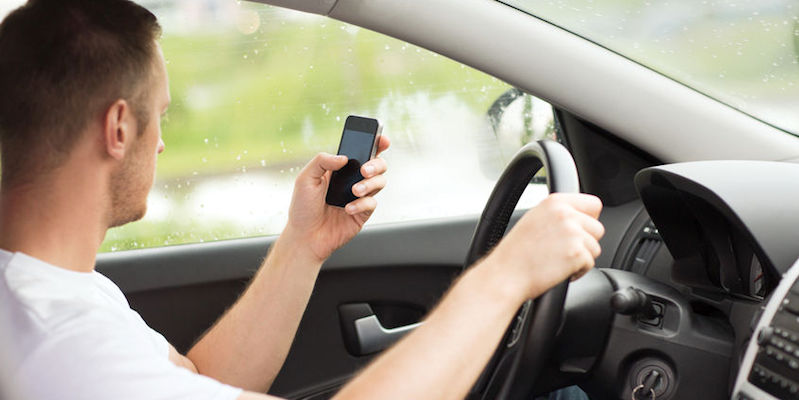Motorists using a phone while driving are two to eight times as likely to have an accident as those who are not interacting with a phone.
Some Colorado authorities believe the risky behavior is behind the increase in auto accident fatalities.
Most drivers know a breathalyzer is used by law enforcement to determine whether someone is driving under the influence of alcohol. What people may not know is that the breathalyzer was actually trademarked in the early 1950s, but it wasn’t until years later that using the device to arrest suspected drunk drivers was declared constitutional.
Today, breathalyzers are used during organized DUI checkpoints, or as an ignition interlock for those convicted of drunk driving. Now, a few states are looking at ways of decreasing the problem of distracted driving, especially when it involves the use of a cell phone while behind the wheel. Could something known as a “textalyzer” be the next tool for law enforcement when it comes to distracted driving?
A New Strategy for Combating Distracted Driving
A breathalyzer is a small device that, once someone blows a quick breath into an attached tube, will measure that person’s blood alcohol content (BAC). Anything above a .08 BAC is considered legally drunk.
It’s an advancement that has saved countless lives over the years. While the issue of drunk driving is far from being resolved, another deadly issue continues to increase, and that is the issue of cell phone use while driving. One state is taking a look at a way of deterring distracted driving, and it is taking the breathalyzer approach, but in this instance, it is calling it a “textalyzer.”
The State of New York continues to research the possible use of a textalyzer device. As an example, if someone is involved in an auto accident, police will connect the driver’s phone to the textalyzer to determine whether it was being used at the time of the crash.
Now granted, there are some huge hurdles that will need to be addressed, mainly privacy issues, and to be fair, there are those who warn of its use. However, for those who have lost a loved one to distracted driving, there is a strong voice for law enforcement and states to do more to deter this dangerous behavior, a danger that seems to be getting worse by the year. Consider this:
- In 2016, 3,450 people were killed in auto accidents due to distracted driving
- In 2015, 391,000 people were injured in crashes involving distracted driving
- As recently as 2103, a national magazine noted that texting and driving was a greater problem among teen drivers than drinking and driving
- And, just how big is this problem? It’s estimated that on any given day in the United States, 481,000 people are driving and using a cell phone at the same time.
In Colorado, the state’s Department of Transportation is encouraging all drivers to download a “Do Not Disturb While Driving” app or utilize the one provided by some phone makers as a one way of cutting down on this deadly behavior. As noted earlier this year in a web article, Colorado is seeing an increase in traffic fatalities, and some authorities believe texting while driving is behind some of that increase. As highlighted in the article, drivers texting or using their phone in some manner are two to eight times as likely to have an accident as those who are not interacting with a phone.
Moving forward, it’s going to be interesting to see whether the idea of allowing law enforcement to use a textalyzer will come to pass as a means on cutting down the number of deaths and injuries due to distracted driving. In the meantime, if you don’t have a “Do Not Disturb” app, you are encouraged to download one and use it every time you are driving. It could be the app that saves your life.

